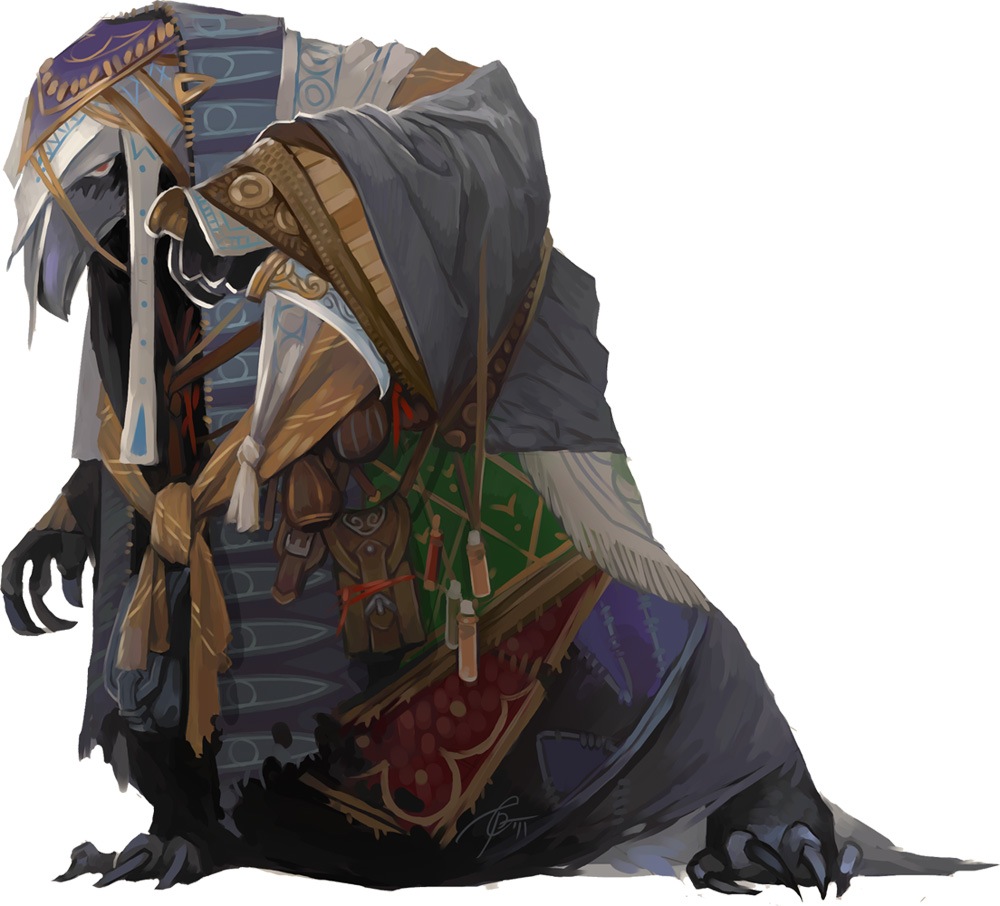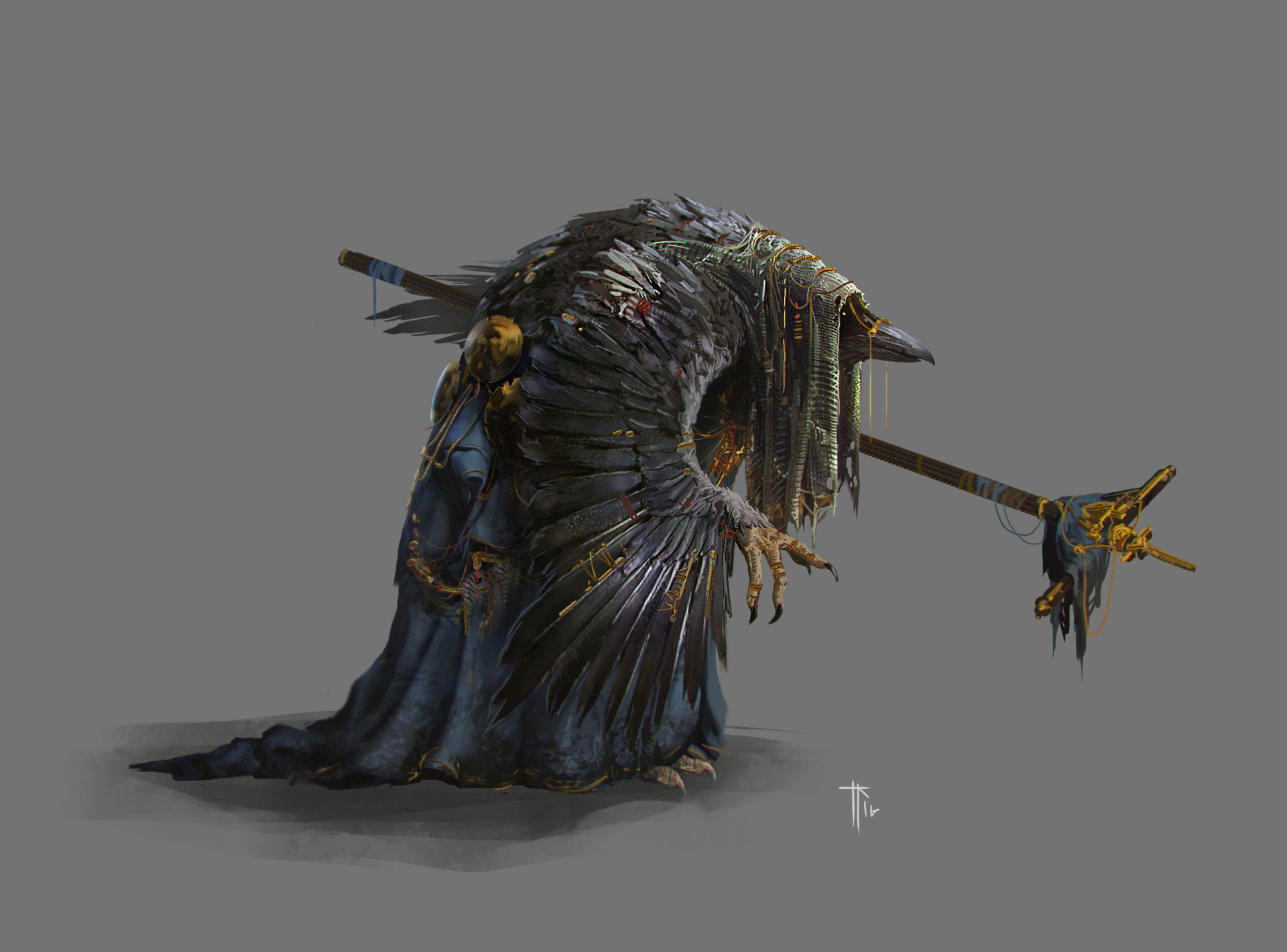The current state of the kenku race can be traced back to end of the Mithril Era some thirteen hundred years ago. During the
The Mithril Era, the kenku were one of several subraces of aarakocra, the favored race of the Sable Witch, the goddess of magic and prophecy. After ascending to godhood and blessing her followers with the avian abilities of flight, the aarakocra lived as proud members of the
Great House of Temekan. However, some of the aarakocra wanted more arcane knowledge and power. They became greedy and looked for a way to further advance their station.
Around this time, another influential Temekanian stumbled upon the workshop of Myurdin. With the help of these ambitious aarakocra, he deciphered Myurdin's work and orchestrated a coup against the royal family of
Temekan. He became known as
Ozha-Ban, the Godking Pharaoh of Temekan. Many came to follow him and even worship him as a deity.
The aarakocra race became split over Ozha-Ban's actions, with some denouncing their maker Myurdin as nothing more than a petty illusionist compared to the Pharaoh. Others maintained their loyalty to Myurdin and sought her guidance. The Sable Witch, a goddess of prophecy looked into the future and saw what was to come from Ozha-Ban's actions. She cursed the fallen aarakocra. She took their flight; for their ambition had soared beyond their humility. She took their language; for, in revealing her secrets to this outsider, their tongues had become good for nothing but mimicry. With no use for these fallen flocks, the Pharaoh exiled the kenku to edges of his kingdom to the isles of Kaira.
But like the cursed kenku, Ozha-Ban's greed and craving for more arcane power consumed him. He, in turn consumed his country, sacrificing hundreds of thousands to perform dark rituals that would extend his life and those of his followers. The gods of the
Heavenly Council were horrified by the Pharaoh's actions and so the Reckoning of Temekan began. Many other followers of Ozha-Ban were similarly cursed or driven into the darkness of the
Doom Caverns by the Heavenly Council. They became known as the
drow, the
duergar, and the
svirfneblin. In someways, the kenku were lucky their patron cursed them before the Reckoning, allowing their souls to remain untainted by the dark magics of the Doom Lich. However, even after centuries of atoning for their treachery, the kenku remain cursed and cast out of mortal society, living at the edges of a world they once thought they could rule from the air.




Comments